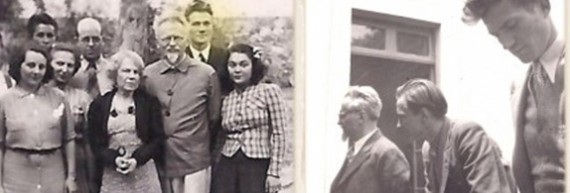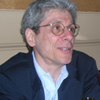Page 3
Jean had left Trotsky’s household amicably a few months before the exiled revolutionary was killed. But he stayed on the Soviet target list. “By what route does VAN intend to travel to FRANCE?,” the NKVD’s Moscow Center demanded to know near the end of World War II in April, 1945. The message was decoded by the Venona project, the decryption operation on Soviet spy message traffic then run by the U.S. Army – and which also led to the discovery of the Soviet spy operation at Los Alamos. In the encrypted message about Jean, a spy code-named KANT had reported that Van was planning to return to his homeland from his new base in New York to lead the French Trotskyist movement. “What is the extent of KANT’s knowledge about the plan for VAN’s trip?,” continued the Moscow message continued. “[G]et KANT to take up this question in real earnest so that he knows all the details of the preperation for the trip.”
These, of course, were not idle inquiries. KANT was Mark Zborowski, the main NKVD spy at the heart of the Trotskyist movement. He was unmasked as Soviet spook in the early 1950s. The Ukraine-born Zborowski had joined the Trotskyist Party in Paris in the 1930s, on assignment from the NKVD. He gained the trust of the doomed Sedov and played a key role in his murder. Zborowski fled to the United States in 1941. By the time he was identified as a Soviet agent he had become an anthropologist in the U.S. under the patronage of Margaret Mead.
Jean, who had been questioned by government agents with some regularity since arriving in the United States in 1939, became a source for FBI agents as they tried to build a case against Zborowski. “He is completely frank and open with the agents interviewing him and at one point volunteered to assist the government by voluntarily going to Harvard University to review Trotsky’s documents in order to garner additional facts,” the FBI’s New York office reported in 1957, in one of a series of documents I obtained under the Freedom of Information Act (cops being cops, the FBI held Jean’s application for U.S. citizenship over him).
Trotsky had sold his archives to Harvard, and Jean, who had had negotiated the transaction, organized the papers for the transfer and knew them better than anyone. The FBI eventually assigned agents to comb through the files with Jean in August, 1958. Details of what they found were blacked out in the memo I obtained. But the FBI documents overall make clear that the focus was on a pair of Soviet agents, one of whom turned up in New York in the 1940s as an espionage contact of Zborowski. Jean eventually testified as a government witness when Zborowski went to trial. After winning one appeal, the anthropologist-agent was convicted of having lied to a Senate subcommittee about spying in the U.S. (after serving less than two years in prison, he relaunched himself as a medical anthropologist in San Francisco, where he died in 1990 – his San Francisco Chronicle obituary written by ex-Trotskyist Stephen Schwartz, who had known Jean).




Responses to “The real “Van””